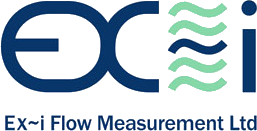The kingdom of Bahrain is about to begin construction of a huge liquefied natural gas (LNG) receiving and regasification terminal to secure its energy future and power industrial expansion. Requiring a $741 million loan from a syndicate of nine regional and international banks and following an international tendering process, the project is owned by a consortium of companies, making the finance arrangements and partnerships involved complex, the construction plans expansive and the future goals ambitious.
Finance and Partnerships
Bahrain’s National Oil and Gas Authority awarded the contract to create the LNG terminal to a consortium of companies, consisting of Teekay LNG Partners, Gulf Investment Corporation and Samsung C&T. The company they created to complete this project and run it is now called Bahrain LNG. Standard Chartered, Arab Petroleum Investments Corporation and the Korea Development Bank were the lead banks in lending Bahrain LNG the substantial sum to carry out the project, but Ahli United Bank, Santander, Crédit Agricole, ING Bank, Natixis and Société Générale were also involved. Korea Trade Insurance Corporation provided commercial and political risk cover for approximately 80 per cent of the financing for the loan’s 20-year tenure.
Construction
Due to be completed in 2019, the terminal will have a capacity of 800 million standard cubic feet per day. It will comprise a floating storage unit, an offshore LNG receiving jetty and breakwater, a regasification platform, gas pipelines from the platform to shore, an onshore gas receiving facility and an onshore nitrogen production facility. GS Engineering and Construction will undertake the majority of the work, with Teekay LNG Group supplying the floating storage unit.
Future Plans
This ambitious project is being undertaken to anticipate Bahrain’s increasing energy needs in the future. Minister for Oil, Sheikh Mohammed bin Khalifa bin Ahmed Al Khalifa, said that this new terminal “will double our current capacity to process associated gas into propane, butane and naphtha”. Government plans to increase power generation by 1.5 GW, as well as expansions by industrial producers such as Aluminium Bahrain, which aims to build a 1.35-MW power plant by 2019, are expected to require an additional 3.3bn cubic metres of gas supply a year. With the International Energy Agency predicting that energy demand in the Middle East will rise from 480bn cu metres in 2015 to 738bn cu metres by 2040, with some countries like Bahrain suffering a shortfall, Bahrain is set to meet this increased demand by creating the facility to import LNG at competitive rates.
Bahrain is anticipating a surge in demand for natural gas to fuel large industrial projects, generate power and water, as well as develop enhanced oil recovery. This LNG receiving and regasification terminal will provide the capacity for large loads of imported LNG to bolster the national production levels and secure the kingdom’s energy future.
Ex~i Flow Measurement supplies flow measuring equipment to the oil and gas industry. To find out how we can help you, call +44 (0)1243 554920.
